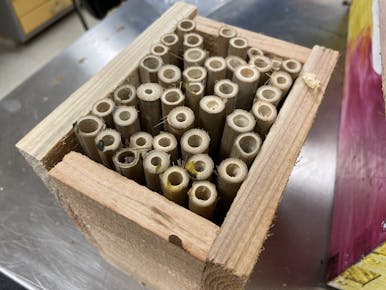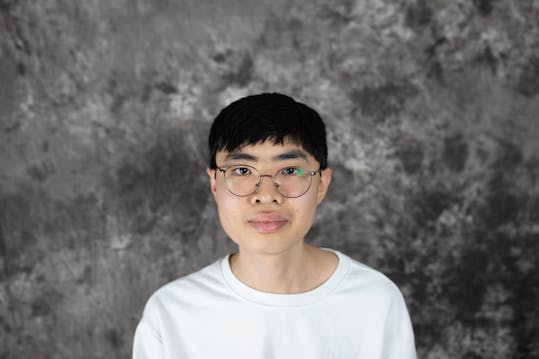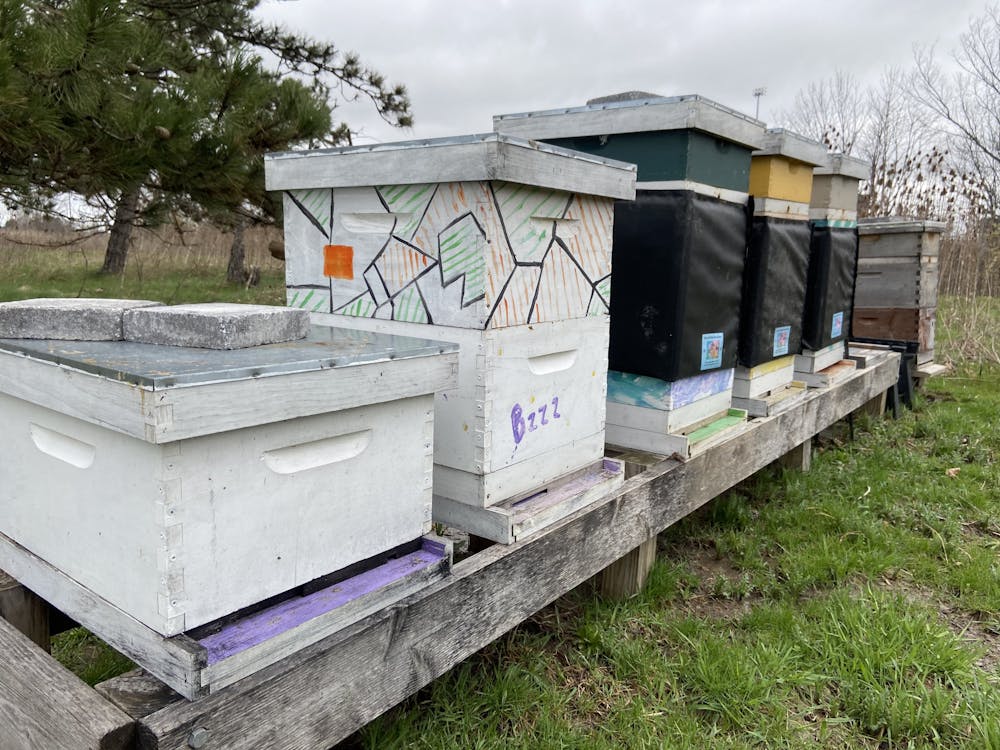When David Hoekstra was in graduate school at Roswell Comprehensive Cancer Center, he purchased his first honeybee hive out of pure curiosity.
Though he had no prior interest in beekeeping, Hoekstra, a clinical assistant teaching professor in the Department of Biological Sciences and Director of UB Bees, fell in love with caring for the honeybees and wanted to bring that experience to other people.
“In that process of learning how to keep bees and how to manage bees, I realized that there are so many opportunities for questions, for curiosity, for people to find something that they find interesting about honeybees,” Hoekstra said. “I noticed that a lot of [my] family, who never had any interest in biology, would talk to me endlessly about the bees and how they worked.”
In 2017, Hoekstra came to UB for an interview, where he was asked by the search committee if he had any ideas for new initiatives or programs. In response, he suggested a program to bring honeybee hives to the campus. But Hoekstra didn’t know how to get the program off the ground — until he met Alex Dombrowski, a UB alum.
Dombrowski, who also wanted to bring honeybee hives to North Campus, proposed applying for funding from the Honors College Research and Creativity Fund. But the process wasn’t so easy for the two bee enthusiasts.
In fall of 2018, Hoekstra and Dombrowski applied for funding, but their request was rejected. A few months later, they tried again and achieved success. After receiving the funds, Hoekstra and Dombrowski found themselves in a race against time to retrieve all the necessary supplies to run the beehives.
“This was hard because they gave us the funds and then two or three days later, we had to go buy the bees,” Hoekstra said. “Interestingly, you can’t install beehives throughout the year, you have to only do it during late April or early May… so it was within a week that we got the funding that we had bees here on campus.”
With the funds, Hoekstra and Dombrowski purchased six beehive boxes and beekeeping suits from Masterson’s Garden Center in East Aurora. After purchasing the supplies, the two bee enthusiasts prepared for the arrival of the honeybees by constructing and painting the beehive boxes. The following day, they obtained their first batch of honeybees.
Once Hoekstra and Dombrowski acquired the bees, they introduced them to the hives — located on the patch of land between Crofts Hall and Bizer Creek. Hoekstra noted that they selected the location as a way for students to get away from the bustling campus.
“Even though you can see Cooke and Hochstetter, you still feel like you are in nature and I think that has a very powerful effect on student wellbeing,” Hoekstra said. “So, giving students a chance to hold honeybees, but also giving them opportunities to grow, and to think and to learn has been really rewarding.”
Since then, Hoekstra, along with students and faculty of UB Bees, have looked after the hives.
In the days leading up to the brutal Buffalo winters, UB Bees prepare by providing additional food, wrapping insulation around the hives and putting pine wood chips in each hive to reduce moisture. They also install metal guards to prevent mice from entering and give the honeybees a treatment against varroa mites — parasites that feed and live on the bees.
As the weather gets warmer, UB Bees “dewinterize” the hives by removing the insulation and pine wood chips. They also clean the hives by swapping out old frames that contain dark honeycomb with new frames.
When the honeybees are active, Hoekstra puts on the bee suit and inspects the hives once every two weeks. Hoekstra refrains from opening the hives too often to avoid disrupting the honeybees’ routine and agitating them.
“There’s a lot of different philosophies with beekeeping,” Hoekstra said. “The one that I subscribe to is that the less you do to the bees, the happier that they will be. They are a wild animal that has been domesticated a little bit, but the more you go into the hive to try to do things or help them, the more you actually can introduce problems.”
Once every fall and spring, Hoekstra harvests honey from the hives. Hoekstra noted that the amount of honey UB Bees collects depends on how much honey the bees produce and seasonal conditions for bees to collect nectar from flowers.
Since the program started, UB Bees has harvested about 55 gallons of honey — 40 of which are sitting and waiting to be processed in the UB Bees room in Cooke Hall. Hoekstra says the program donated about 15 gallons of honey to Blue Table — UB’s food pantry.
Recently, UB Bees expanded its sustainability efforts to include other bee types, including wild bees. Andrea Keeler, a clinical assistant professor in the Department of Biological Sciences, who joined the program during the fall of 2023, is responsible for coordinating projects surrounding wild bees.
This month, Keeler and dozens of undergraduate students will meet every Sunday to construct bee hotels — nesting spaces for solitary and wild bees to lay their eggs. The bee hotels, which are made out of blocks of wood and hollow bamboo sticks, will be placed around the North Campus.
“Something we’re really interested in is looking at what bees are living here, what they pollinate and what they’re eating,” Keeler said. “So, we’re going to be placing these bee hotels out [in] areas that have lots of native plants.”

While in the program, Keeler aspires to decrease the fear of bees. She believes that the program is an effective way for students and faculty to understand how important bees are to society.
“There is this negative connotation that bees are dangerous, bees are bad, bees are bugs that you should be killing,” Keeler said. “But one of the coolest parts of working in pollinator ecology is demystifying that… most of our food comes from bees. They need to pollinate those plants, so that we can eat our strawberries in the early summer and tons of other produce.”
While thinking about the future of UB Bees, Hoekstra hopes to develop a larger bee research team to accommodate the curiosities and interests of students in the program.
“I would love to see us continue to grow and have a multi-disciplinary team of people come together to run all these projects,” Hoekstra said. “But hopefully by doing so, we can increase the health, diversity and viability of pollinators who are at large in Buffalo and Western New York.”
Jason Tsoi is an assistant features editor and can be reached at jason.tsoi@ubspectrum.com

Jason Tsoi is an assistant features editor at The Spectrum. He is an English major with a certificate in journalism. During his free time, he can be found listening to music and watching films.





